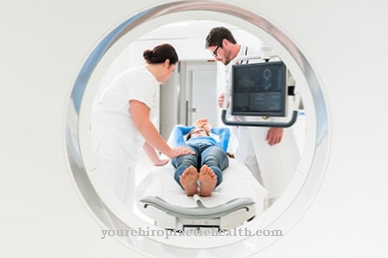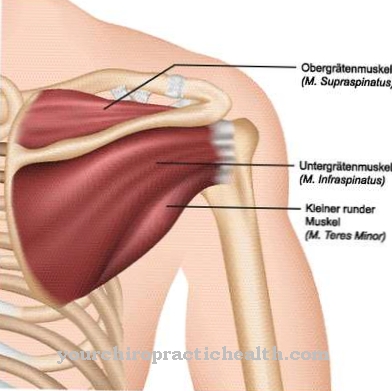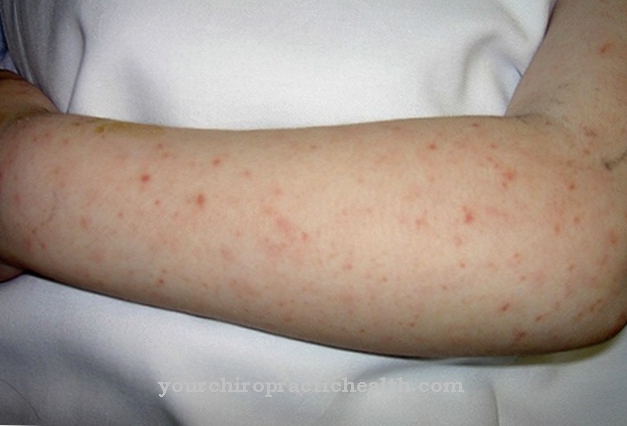As Cystinosis is called a hereditary metabolic disease. This leads to an excessive accumulation of cystine in numerous organs.
What is cystinosis?

© Peter Hermes Furian - stock.adobe.com
Cystinosis is a congenital metabolic disease that is inherited. She is also under the names Cystinosis, Cystine storage disease, Amine diabetes, Abderhalden-Fanconi syndrome or Lignac syndrome known. In most cases, the disease manifests itself in childhood. There is also an adult form that Bürki-Rohner-Cogan syndrome is called.
Typical features of cystinosis include the accumulation of the amino acid cystine in several organs. These can be the muscles, kidneys, pancreas, eyes or the brain. Different organs are attacked at different ages. Cystinosis is considered a very rare disease. It only occurs in one in 100,000 to 200,000 newborn children. So far, only around 200,000 cases of illness have been registered around the world.
causes
With cystinosis, it is important to differentiate between three forms of progression. There is an infantile nephropathic, an adolescent nephropathic and an adult benign form.
- The most common form is formed by the infantile-nephropathic variant. Kidney malfunctions occur in the affected child as early as six months of age.
- The adolescent nephropathic form, on the other hand, only shows up in adolescence.
- The adult benign form only occurs in adult humans.
Cystinosis belongs to the group of hereditary diseases. It is inherited as an autosomal recessive trait. That means inheritance on two autosomes. In addition, two genes are required from both the father and mother. In every parent whose child has cystinosis there is a normal gene and a defective gene. Cystinosis is not noticeable in the parents.
A mutation in the CTNS gene is responsible for the development of cystinosis. This is located on chromosome 17. This gene encodes cystinosine, which is a lysosomal cystine transporter. The transport disruption in the cystine lysosomes results in the accumulation of cystine in several organs.
These are primarily the liver, spleen, kidneys, bone marrow, and the conjunctiva and the cornea of the eyes. Since the cystine is only slightly soluble, the amino acid ensures the formation of crystals within the cell lysosomes. This presumably leads to the destruction of the cells.
Symptoms, ailments & signs
The symptoms of cystinosis depend on the particular form. The infantile-nephropathic form usually occurs between the 6th and 18th month of life. It becomes noticeable through general complaints such as fever, vomiting, loss of appetite, weight arrest and chronic constipation. In addition, polyuria (increased urine excretion), polydipsia (pathological thirst), incorrect growth and rickets occur. The disease usually has no influence on the intellectual development of the affected children.
Since the kidneys are affected by the cystine storage disease, this leads to a loss of water and electrolytes as well as acidosis (blood acidification). If there are also infections, the babies and toddlers affected often suffer from weakness and significant metabolic disorders. Spontaneous bone fractures and pseudofractures are also possible.
In the adolescent-nephropathic form, cystinosis only shows up between the ages of 10 and 12. The disease then progresses faster, which quickly leads to kidney damage. The adult benign form can only be discovered in adulthood. The only symptom in adults is usually only deposits of crystals in the eyes.
Diagnosis & course
Since cystinosis is an extremely rare disease, it is not always easy to diagnose. However, it is possible to detect cystine storage in the lymph nodes, rectal mucosa, fibroblasts and leukocytes (white blood cells).
If the eyes are examined with a slit lamp, cystine crystals can be found in the cornea. If the fundus is reflected, retinopathy can be seen. Prenatal diagnostics can also be performed in families who are at risk of cystinosis. A chorionic biopsy is performed between the 8th and 9th week of pregnancy. An amniotic fluid test can also be carried out between the 14th and 16th week of pregnancy.
Without special treatment, cystinosis results in fatal kidney failure in affected children. As a rule, they lose their kidney function when they are 9 years old. If a kidney transplant takes place, the new kidney is no longer damaged in adulthood. Without treatment with cysteamine, however, there is a risk of considerable complications such as diabetes mellitus, swallowing disorders and muscle breakdown, which does not always happen.
When should you go to the doctor?
If cystinosis is suspected, a doctor should be consulted immediately. Depending on the form, the disease manifests itself through different symptoms. In the infantile-neprhopathic form, the typical symptoms - including fever, vomiting, loss of appetite, weight arrest and chronic constipation - usually occur between the ages of 6 and 18 months. Parents who notice symptoms during this period should take the child to the family doctor immediately.
Similar symptoms, which only appear between the ages of 10 and 12, point to the adolescent-nephropathic form. In this case, too, go straight to the pediatrician and have the child examined. In adulthood, the disease usually only manifests itself as noticeable deposits of crystals in the eyes. A specific diagnosis is therefore difficult.
A doctor's visit is recommended if a gradual decrease in quality of life is felt for which no clear cause can be found. Anyone who already suffers from another metabolic disease should speak to the responsible doctor immediately if the symptoms are mentioned.
Doctors & therapists in your area
Treatment & Therapy
Treatment of the causes of cystinosis is not yet possible. Therefore, treatment is limited to the symptoms of the disease. For this purpose, the affected children are given phosphate and vitamin D. In this way, rickets can be avoided. It is also important to take cysteamine, which is used to slow down kidney damage. So the agent inhibits the deposition of cystine in the cells.
The cysteamine also has a positive effect on the growth of the sick children. The agent is usually administered in the form of capsules. To treat cystine deposits in the cornea of the eye, eye drops containing cysteamine are given. The electrolyte imbalances are also corrected. Hemodialysis is used to treat kidney failure. Sometimes a kidney transplant may be required. This form of treatment proved to be very effective.
Outlook & forecast
The prognosis is unfavorable and depends on the type of cystinosis. This is determined according to the age of onset of the patient and in the worst case can be fatal. The hereditary disease is treated symptomatically, as no cure is possible with the available options. Nonetheless, significant medical advances have been made in recent years that alleviate symptoms and extend the life span.
The prospects for improved well-being and an increase in quality of life were largely achieved thanks to the new therapy options. The older the patient is at the first signs of the disease, the better their chances.
There are three types of cystinosis, which are largely related to the age of the patient. In infantile nephropathic cystinosis, the kidneys malfunction after just a few months of birth. This is the most common type of cystinosis and it already occurs in babies as early as 6 months of age. Without medical care, one's health deteriorates and kidney failure occurs.
The prognosis improves once a kidney transplant is possible. It can ensure the survival of those affected, but there are numerous side effects or sequelae. Therefore, no cure can be achieved with a donor kidney.
prevention
Cystinosis is one of the congenital diseases that are inherited. For this reason, no preventive measures are possible.
Aftercare
As a rule, it cannot be generally predicted whether the person affected with cystinosis will have special follow-up measures available. These depend heavily on the cause and also on the treatment of the cystinosis, whereby the person affected should contact a doctor as soon as the first symptoms and signs of this disease appear. The earlier a doctor is consulted and the treatment initiated, the better the further course of the disease will usually be.
The treatment itself is mostly done by taking medication and other supplements. The person concerned should ensure that they are taken regularly and that the dosage is correct. In the case of children, the parents in particular have to control the appropriate intake. A regular diet can also relieve the symptoms of cystinosis.
The attending physician can also prepare a nutrition plan for the person affected, which can alleviate the symptoms. Since the disease can lead to damage to the internal organs, regular examinations by an internist are also very useful. Above all, the kidneys should be examined. This disease may reduce the life expectancy of those affected.
You can do that yourself
Cystinosis is a hereditary disease and cannot be treated causally. So those affected cannot do anything to combat the causes of the disease. Any symptoms that occur must be examined by a doctor.
The most common form of cystinosis is the infantile nephropathic form, which occurs in infants from about six months of age and is usually associated with a malfunction of the kidneys. Affected children should be given phosphate and vitamin D to relieve symptoms. This prevents rickets.
However, young parents often feel overwhelmed in this situation. You can find support from self-help associations that are also active online. Cystinosis self-help groups inform affected parents about the current state of research, try to answer questions from everyday life and also establish contact with other families with children who suffer from cystinosis.
Upon request, the employees of these associations can also accompany parents to discussions with doctors, educators or the school management. Some self-help groups also provide videos and other information material with the help of which the social environment of the affected children can be informed about the disease. In addition, many hospitals also offer special cystinosis consultation hours.





.jpg)





















